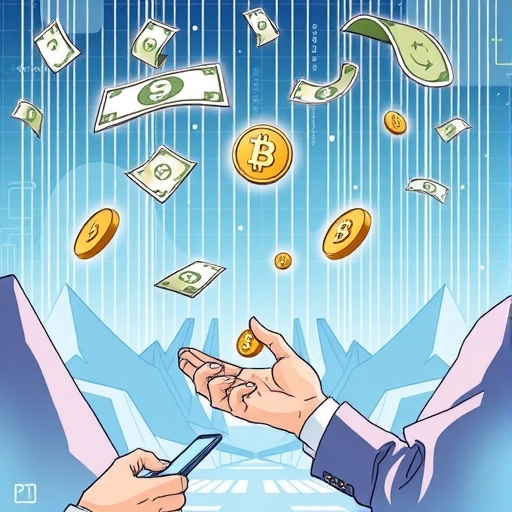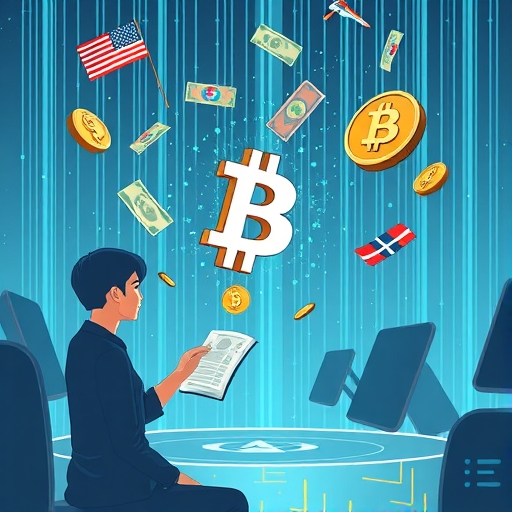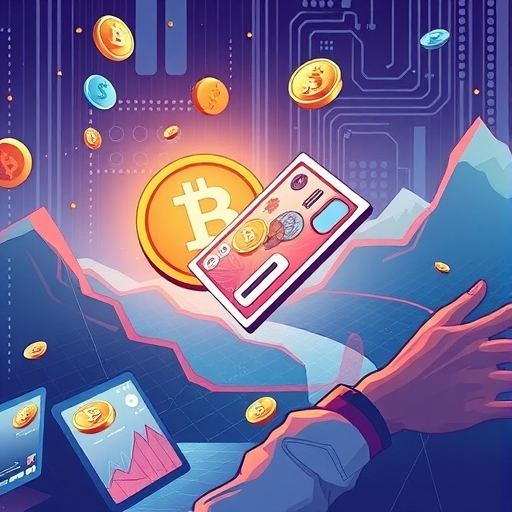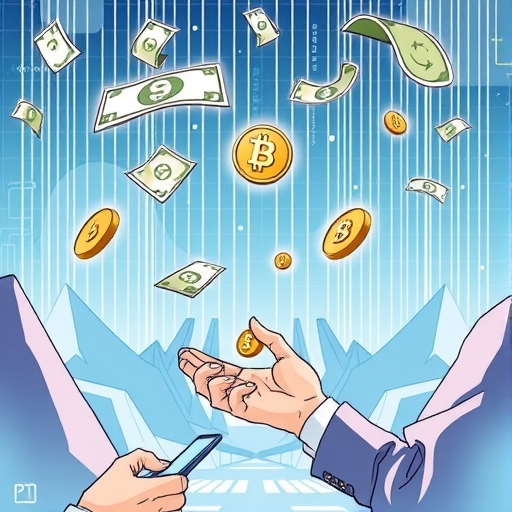Understanding Fiat Money: Your Compass in the Modern Financial Labyrinth
Welcome, aspiring investors, to a crucial exploration of the very foundation of our global economy: fiat money. In a world increasingly buzzing with digital assets and decentralised finance, it’s easy to overlook the bedrock upon which nearly all transactions are built. Yet, a profound understanding of fiat currency is not just academic; it’s an indispensable tool for navigating markets, understanding economic policies, and ultimately, making informed financial decisions.
What exactly is this government-issued currency that we use daily? How does it gain its value, and what makes it different from the gold and silver that once backed our financial systems? More importantly, how does one acquire fiat currency in an increasingly digital world, especially when moving between traditional and burgeoning crypto markets? We will embark on a journey together, demystifying this complex yet critical subject, providing you with the clarity and confidence to wield this knowledge effectively.
Our mission is to equip you with the insights of a seasoned expert, translating intricate financial concepts into understandable wisdom. By the end of this comprehensive guide, you will not only grasp the essence of fiat money but also appreciate its profound influence on economic stability, investment opportunities, and the very fabric of global commerce.

Understanding how fiat currency operates is crucial for effective investment strategies.
- Provides insight into monetary policy.
- Helps gauge economic stability.
- Informs decisions about currency exchange.
| Feature | Fiat Money | Commodity Money |
|---|---|---|
| Definition | Government-issued currency not backed by a physical commodity. | Money backed by a physical commodity like gold or silver. |
| Value Basis | Legal tender status by government decree. | Intrinsic value derived from the physical commodity. |
| Supply Control | Can be adjusted to manage economies. | Limited by the availability of the commodity. |
What is Fiat Money? Understanding the Unbacked Cornerstone
Let’s begin at the very beginning: what defines fiat money? Simply put, it is a government-issued currency that is not backed by a physical commodity like gold or silver. Unlike historical forms of money, which derived their value from the intrinsic worth of the metal they contained or represented, fiat currency holds value primarily because a government declares it to be legal tender.
Consider the U.S. dollar, the Euro, or the British Pound. None of these currencies can be redeemed for a specific quantity of gold or any other physical asset. Their value stems from a combination of factors:
- Government Decree: The issuing government mandates its acceptance for the payment of taxes and debts. This creates fundamental demand.
- Public Trust and Confidence: People believe the currency will be accepted by others for goods and services, now and in the future. This collective belief is paramount.
- Supply and Demand Dynamics: Like any other economic good, its value is influenced by how much of it is in circulation (supply) versus how much people want or need it (demand).
The term “fiat” itself is Latin for “it shall be” or “let it be done,” precisely indicating that its value is established by decree. This characteristic of being inconvertible – meaning it cannot be exchanged for an underlying commodity – marks a fundamental shift from earlier monetary systems. Do you ever stop to think about why that piece of paper in your wallet holds any value? It’s the powerful, collective agreement and governmental backing that makes it a viable medium of exchange.
This concept is crucial because it grants central banks and governments immense flexibility in managing their economies. Without the constraints of a physical commodity, they can adjust the money supply to influence economic variables like interest rates, inflation, and unemployment. But as we will explore, this power, while beneficial, also carries significant risks.

- Rising inflation rates can diminish the value of your savings.
- Economic instability can lead to rapid currency devaluation.
- Understanding these effects is key to financial planning.
A Brief History: From Gold Standards to Global Fiat Dominance
To truly appreciate fiat money, we must understand its historical context. For centuries, currencies were often minted from valuable metals or were redeemable for them. The gold standard, a monetary system where a country’s currency or paper money has a value directly linked to gold, was the predominant model for much of the 19th and early 20th centuries.
Take the United States, for instance. U.S. currency was directly backed by gold until the Emergency Banking Act of 1933, which began to loosen this tie. The definitive break came in 1971, when President Richard Nixon formally ended the convertibility of the U.S. dollar to gold for international transactions, effectively dismantling the Bretton Woods Agreement. This agreement, established in 1944, had pegged other global currencies to the gold-backed U.S. dollar, making it the linchpin of the post-World War II international monetary system.
Why this shift? The move away from the gold standard was driven by a desire for greater flexibility in monetary policy. A gold-backed currency limits a government’s ability to stimulate its economy during downturns or to fund large-scale projects, as it can only print as much money as it has gold reserves. By transitioning to fiat money, governments gained the freedom to expand their money supply as needed, theoretically providing more tools to manage economic cycles and stabilize global markets.
While paper money first emerged in China during the 11th century, and currencies like the British Pound boast an even longer lineage, the widespread global adoption of unbacked fiat currency is a relatively modern phenomenon. This historical progression highlights a deliberate evolution towards economic tools that prioritize governmental control and adaptability, fundamentally reshaping how we perceive and interact with money.
| Historical Event | Year | Description |
|---|---|---|
| Emergence of Paper Money | 11th Century | First introduced in China, marking a shift from commodity-based to paper-based transactions. |
| Bretton Woods Agreement | 1944 | Established a fixed exchange rate system for global currencies linked to the U.S. dollar. |
| Nixon’s Shock | 1971 | Ended the direct convertibility of the U.S. dollar to gold, marking a shift to fiat currency. |
The Unparalleled Power of Central Banks: Steering the Fiat Economy
One of the most significant advantages of fiat money lies in the immense control it grants to central banks. Unlike commodity-backed currencies, where the supply of money is constrained by the availability of the underlying commodity, fiat currency supply can be adjusted. This flexibility is a powerful lever for influencing the economy.
Central banks, such as the U.S. Federal Reserve, the European Central Bank, or the Bank of England, utilise various tools to manage the money supply, credit, liquidity, and interest rates. Their actions directly impact the cost of borrowing, which in turn affects consumer spending, business investment, and overall economic activity. Think of the money supply as a tap: central banks can open or close it to speed up or slow down the flow of money in the economy.
Here’s how this unparalleled control benefits us:
- Economic Stabilization: During recessions, central banks can increase the money supply (e.g., through Quantitative Easing) and lower interest rates to encourage borrowing and spending, stimulating growth. In times of overheating, they can do the opposite to curb inflation.
- Flexibility in Crisis: Fiat systems allow governments to respond swiftly to financial crises or unforeseen events (like pandemics) by injecting liquidity into the system, preventing deeper economic collapses. The 2007 mortgage crisis response, for example, heavily relied on such monetary interventions.
- Cost Efficiency: Producing fiat money is significantly cheaper than minting coins from precious metals. This difference, known as seigniorage, can be a substantial revenue source for governments.
- Facilitates Fractional Reserve Banking: This system allows banks to lend out a large portion of the deposits they receive, effectively multiplying the money available for borrowers and fostering economic expansion.
This level of control means that monetary policy can be tailored to specific economic conditions, aiming for a delicate balance between growth, employment, and stable prices. Do you see how this flexibility empowers governments to actively manage their economic destiny, rather than being passively tied to a physical commodity?
However, with great power comes great responsibility. The ability to create an unlimited supply of money, if mishandled, can lead to significant downsides, which we will explore next.

Navigating the Risks: Inflation, Hyperinflation, and Erosion of Trust
While the flexibility of fiat money offers significant advantages, it also carries inherent risks, primarily centered around its potential to lose value. Unlike gold, which has an objectively limited supply, the supply of fiat currency is theoretically unlimited. This lack of intrinsic scarcity means its value is fundamentally reliant on two critical pillars: public faith in the issuing government and the responsible handling of the money supply by central banks.
The most immediate and pervasive risk is inflation. This is the rate at which the general level of prices for goods and services is rising, and consequently, the purchasing power of currency is falling. If a government excessively prints money without a corresponding increase in economic output, more money chases the same amount of goods, leading to higher prices. It’s like a silent tax, eroding the value of your savings and investments over time.
In extreme cases, unchecked money printing can spiral into hyperinflation. This is a rapid, out-of-control inflation, where prices increase at an accelerating rate, often exceeding 50% per month. Historical examples are stark warnings:
- Weimar Republic Germany (1920s): The German Mark became virtually worthless, with citizens needing wheelbarrows of cash to buy bread.
- Zimbabwe (2000s): The Zimbabwean dollar experienced astronomical hyperinflation, forcing the government to issue banknotes in denominations of trillions and ultimately abandon its currency.
- Hungary (Post-WWII): The Hungarian pengő suffered the worst hyperinflation ever recorded, with daily price increases exceeding 200%.
These catastrophic events demonstrate that when public faith in the issuing government or its ability to manage its finances collapses, fiat money can indeed become worthless. This vulnerability underscores the importance of sound fiscal and monetary policies.
Furthermore, an unlimited money supply can create opportunities for economic bubbles, where asset prices become inflated beyond their intrinsic value, potentially leading to painful corrections. While fiat money provides powerful tools for economic management, their misuse can lead to severe long-term problems or amplify swings in the business cycle. Understanding these risks is paramount for any investor, as they directly impact the long-term purchasing power of your financial assets.
Fiat in the Digital Frontier: The Evolution of Transactions
The journey of fiat money has been one of constant evolution. From tangible coins and printed banknotes, we have witnessed a profound shift towards digital transactions. Today, the vast majority of our daily financial interactions involve digital representations of fiat currency, rather than physical cash.
Consider how you pay for things: online banking, mobile payment apps, debit cards, and credit cards are now the norm. These are all mechanisms for moving digital fiat money from one account to another. This digitization has brought unparalleled convenience, speed, and efficiency to our economic lives. It has enabled global commerce on an unprecedented scale, making cross-border transactions faster and more accessible than ever before.
This digital transformation has also paved the way for more sophisticated financial instruments and services. The underlying infrastructure of our global banking system, built on the principle of fiat currency, has adapted to these technological advancements, creating seamless flows of funds across continents.
However, this transition also highlights a crucial point: while the *form* of money has changed from physical to digital, the fundamental nature of fiat money—its government backing, reliance on trust, and central bank control—remains constant. These digital representations are still ultimately tethered to a national currency issued by a sovereign state.
This persistent evolution is not static. We are now on the cusp of another significant shift: the exploration and potential implementation of Central Bank Digital Currencies (CBDCs). These are essentially digital versions of a country’s fiat currency, issued and backed by the central bank itself. Unlike existing digital money (which is mostly commercial bank liabilities), CBDCs would be direct central bank liabilities, promising even greater control, efficiency, and potentially new monetary policy tools. Are you ready for a future where your national currency might exist primarily as a string of code?
Acquiring Fiat in the Modern Age: The Role of Crypto On-Ramps and Off-Ramps
In an increasingly interconnected financial world, the question of “how to buy fiat currency” extends far beyond simply withdrawing cash from an ATM or receiving a paycheck. Particularly for those engaging with the burgeoning world of digital assets, acquiring or converting fiat currency often involves bridging the gap between traditional banking systems and the cryptocurrency ecosystem.
This is where the concept of crypto on-ramps and off-ramps becomes critically important. These services act as gateways, allowing you to convert your traditional fiat money into cryptocurrencies (on-ramp) or, conversely, convert your cryptocurrencies back into fiat currency (off-ramp) that you can then deposit into your bank account or spend in the real world.
How do these mechanisms for acquiring or converting fiat currency typically work?
- Crypto Exchanges: Platforms like Binance, Coinbase, or Kraken allow users to deposit fiat currency (via bank transfers, credit cards, or other payment methods) to buy cryptocurrencies. They also facilitate the reverse process: selling crypto for fiat and withdrawing it.
- Integrated Solutions (Widgets/APIs): Many decentralised applications (dApps) and crypto wallets (like MetaMask) integrate third-party providers (such as Ramp Network, Transak, or MoonPay) that offer direct crypto-to-fiat conversion services. This allows users to “buy fiat currency” by selling crypto directly from their wallet, or buy crypto using fiat, without leaving the dApp.
- Peer-to-Peer (P2P) Trading: In some markets, individuals directly trade crypto for fiat with one another, often facilitated by escrow services on P2P platforms to ensure trust and security.
These on-ramps and off-ramps are crucial for the liquidity and usability of both fiat money and cryptocurrencies. They provide the practical means for individuals and businesses to move value between these two distinct financial paradigms. For instance, if you’ve profited from a Bitcoin trade, you’ll need an efficient off-ramp to convert that digital wealth into spendable U.S. dollars or Euros for your everyday needs.
Understanding these mechanisms is vital for any modern investor or trader. As you venture into different financial markets, you’ll encounter various ways to engage with currencies, both traditional and digital. If you’re considering entering the world of foreign exchange (Forex) trading or exploring other Contract for Difference (CFD) instruments that involve fiat currencies, finding a reliable platform is key. Moneta Markets, an Australian-based platform, offers over 1000 financial instruments, catering to both novice and experienced traders. Their robust offerings can be a valuable resource as you deepen your engagement with global financial markets.
Security and Scrutiny: Battling Illicit Flows at the Crypto-Fiat Junction
The increasing ease of converting between cryptocurrencies and fiat money, while beneficial for legitimate users, has unfortunately created new avenues for illicit activities. The pseudonymity often associated with certain cryptocurrencies, combined with the convenience of crypto-to-fiat conversion services, has presented challenges for regulatory bodies and law enforcement agencies globally.
A significant concern is money laundering. Criminals exploit these interfaces, using what are often referred to as “money mule” schemes. In such scenarios, individuals (sometimes unknowingly) act as intermediaries, receiving illicit funds in cryptocurrency and then converting them into fiat currency via on-ramp services, before wiring them to other accounts or withdrawing cash. This process aims to obscure the origin of the funds, making them appear legitimate within the traditional banking system.
Regulatory bodies worldwide are actively working to address these risks. For example:
- The Markets in Crypto-Assets (MiCA) framework in the European Union is a comprehensive set of regulations aimed at bringing clarity and oversight to the crypto market, including rules for crypto-asset service providers that facilitate crypto-to-fiat conversions.
- The Financial Conduct Authority (FCA) in the UK has also implemented stringent rules for crypto businesses operating within its jurisdiction, focusing on anti-money laundering (AML) and counter-terrorist financing (CTF) measures.
These regulations often mandate Know Your Customer (KYC) procedures for users of conversion services, requiring identity verification to prevent anonymity from being exploited. The goal is to strike a balance: fostering innovation in digital finance while safeguarding the integrity of the global financial system and combating financial crime. As an investor, understanding these regulatory trends is crucial, as they shape the security and accessibility of both fiat currency and digital assets.
The Future Landscape: Central Bank Digital Currencies (CBDCs) and Beyond
Despite the rise of cryptocurrencies and the ongoing digital transformation, fiat money continues to be the undisputed cornerstone of modern economies. Its enduring importance is not merely a matter of tradition but reflects its fundamental role in governmental economic management and maintaining stability.
However, the future of fiat currency is not static. The ongoing exploration and development of Central Bank Digital Currencies (CBDCs) signify the next significant phase in its evolution. CBDCs aim to combine the advantages of traditional fiat money (centralized control, legal tender status, stability) with the efficiencies and technological advancements of digital currencies. While still in various stages of research and pilot programs globally, CBDCs could potentially reshape payment systems, monetary policy transmission, and financial inclusion.
Consider the potential benefits of CBDCs:
- Increased Efficiency: Faster, cheaper, and more transparent payments, potentially leading to immediate settlement.
- Financial Inclusion: Providing access to banking services for unbanked populations.
- Enhanced Monetary Policy: Offering central banks new tools for directly influencing the economy, potentially allowing for more precise liquidity management or targeted stimulus.
At the same time, the relationship between fiat money and private cryptocurrencies will continue to evolve. While cryptocurrencies offer decentralization and innovation, their volatility and lack of a central guarantor mean they are unlikely to fully displace fiat currency as the primary medium of exchange for everyday transactions in the near future. Instead, we are likely to see a continued coexistence, with robust crypto-to-fiat conversion mechanisms playing a vital role.
The ongoing regulatory efforts, such as MiCA and FCA guidelines, further indicate a trend towards integrating and securing the traditional fiat money system against new digital challenges, rather than allowing a complete disruption. The future financial landscape will undoubtedly be a hybrid one, where the tried-and-true principles of fiat currency adapt and integrate with the innovations of the digital age.
Mastering Fiat: Your Path to Informed Financial Decisions
We have journeyed through the intricate world of fiat money, from its fundamental definition and historical evolution to its profound impact on economic policy and its dynamic interaction with emerging digital assets. You now possess a comprehensive understanding of why fiat currency remains the bedrock of our financial system, empowering governments with unparalleled control while simultaneously presenting inherent risks such as inflation and hyperinflation.
For any investor, whether you are just starting your journey or looking to deepen your expertise, mastering the nuances of fiat money is not just an academic exercise; it is a practical necessity. Your ability to comprehend central bank actions, anticipate shifts in monetary policy, and assess the true purchasing power of your investments directly impacts your potential for profit and wealth preservation. Understanding how global money supply fluctuations, particularly in major fiat currencies like the U.S. dollar (as measured by the DXY index), influence the valuation of alternative assets, including cryptocurrencies, is a crucial insight.
The digital age continues to transform how we acquire and interact with fiat currency, particularly through the vital role of crypto on-ramps and off-ramps. These gateways are not just technical conveniences; they represent the evolving interface between traditional finance and the decentralized future. And as governments worldwide explore Central Bank Digital Currencies (CBDCs), the very form of fiat money is poised for another transformative leap.
Our goal has always been to simplify complex financial knowledge, making it accessible and actionable for you. By understanding the forces that shape fiat money, you gain a powerful lens through which to view economic trends, assess investment opportunities, and protect your financial well-being. This knowledge empowers you to participate more confidently and effectively in the global economy, moving beyond mere participation to becoming a truly informed and strategic financial actor.
Remember, the financial landscape is always evolving, but foundational knowledge of concepts like fiat money provides a stable anchor. As you continue your investing journey, keep questioning, keep learning, and keep applying this knowledge to achieve your financial aspirations. Should you seek to apply this understanding in active trading, particularly in the dynamic foreign exchange market where fiat currency values are constantly in play, remember that selecting a robust platform is essential. Moneta Markets offers the flexibility and technological advantages you might need, supporting mainstream platforms like MT4, MT5, and Pro Trader, along with high-speed execution and competitive spreads for an optimized trading experience. This kind of comprehensive support can be invaluable as you navigate the complexities of global markets.
how to buy fiat currencyFAQ
Q:What is fiat money?
A:Fiat money is government-issued currency not backed by a physical commodity but rather established as legal tender by government decree.
Q:How does one acquire fiat currency in today’s digital world?
A:Fiat currency can be acquired through traditional banking methods, online exchanges, or converting digital currencies via crypto on-ramps.
Q:What are the risks associated with fiat money?
A:Fiat money’s main risks include inflation, hyperinflation, and loss of public trust in the government or monetary policies.

留言